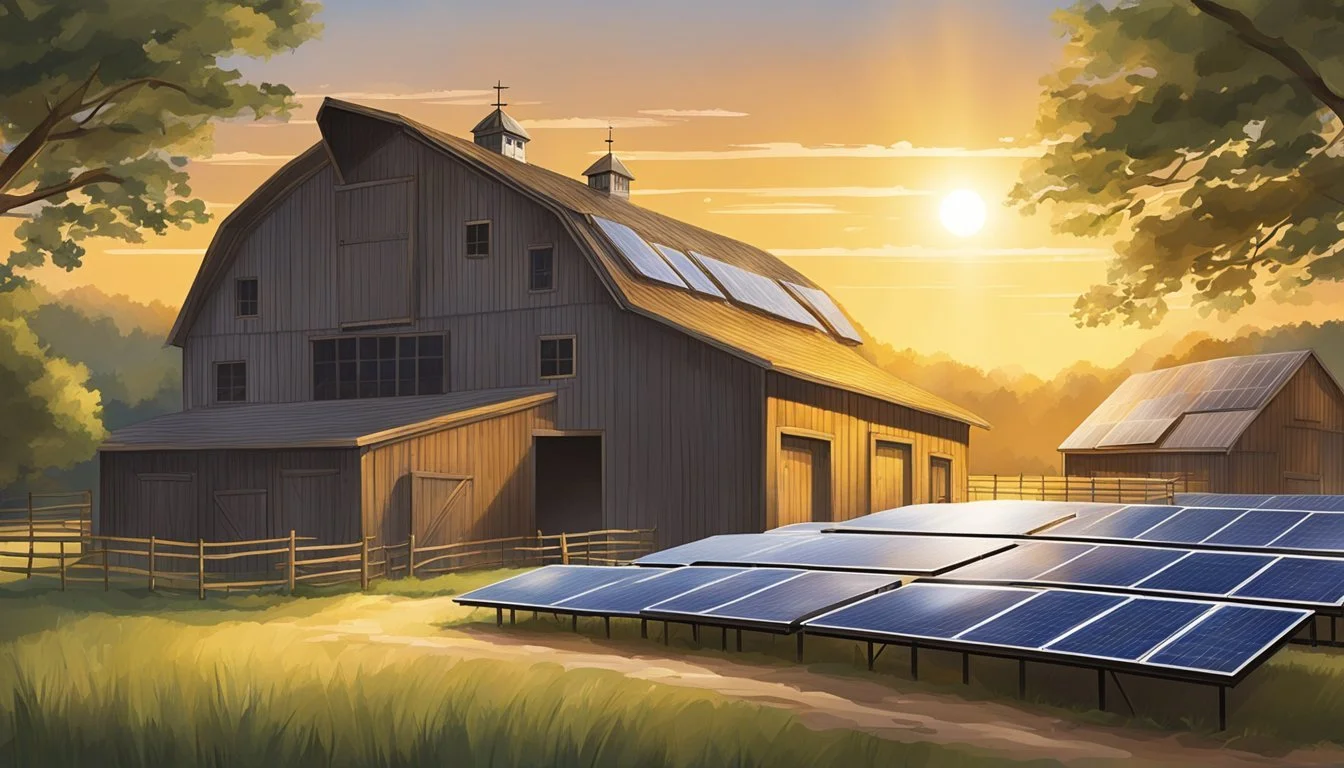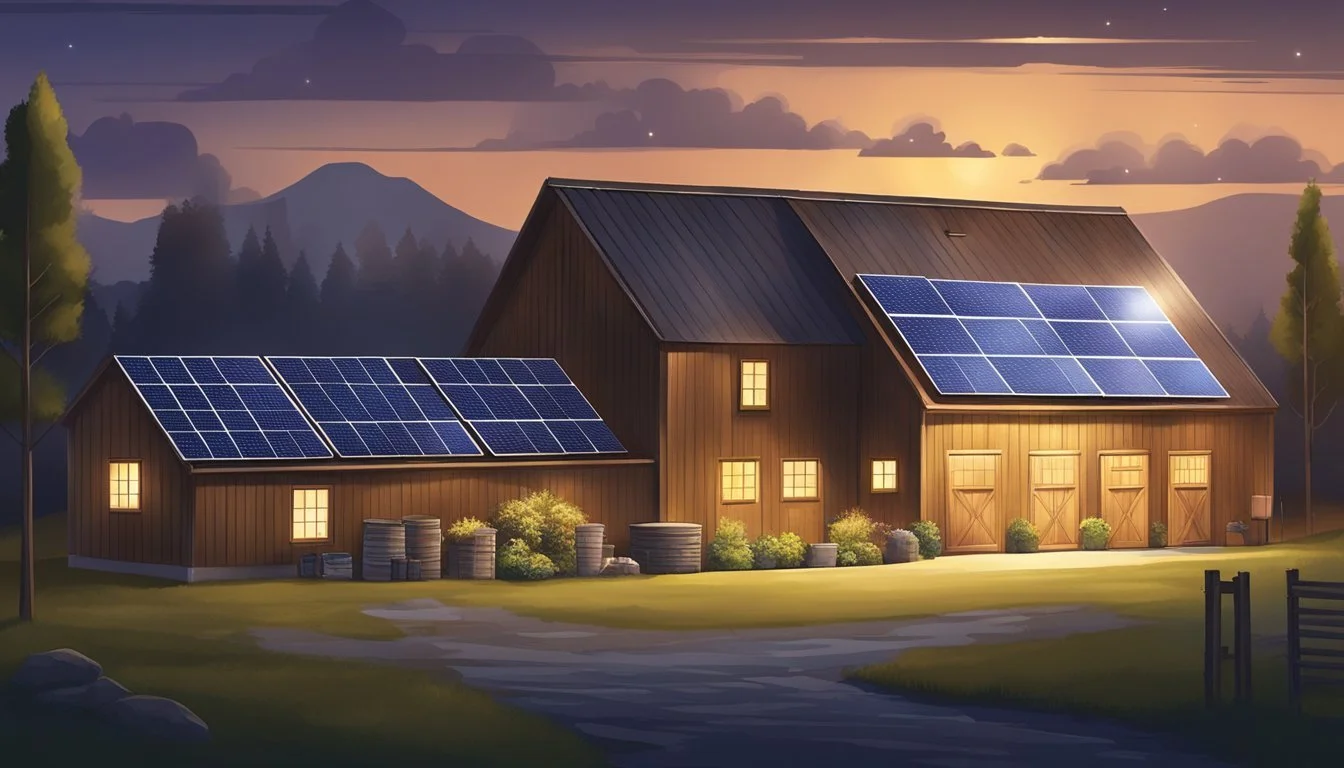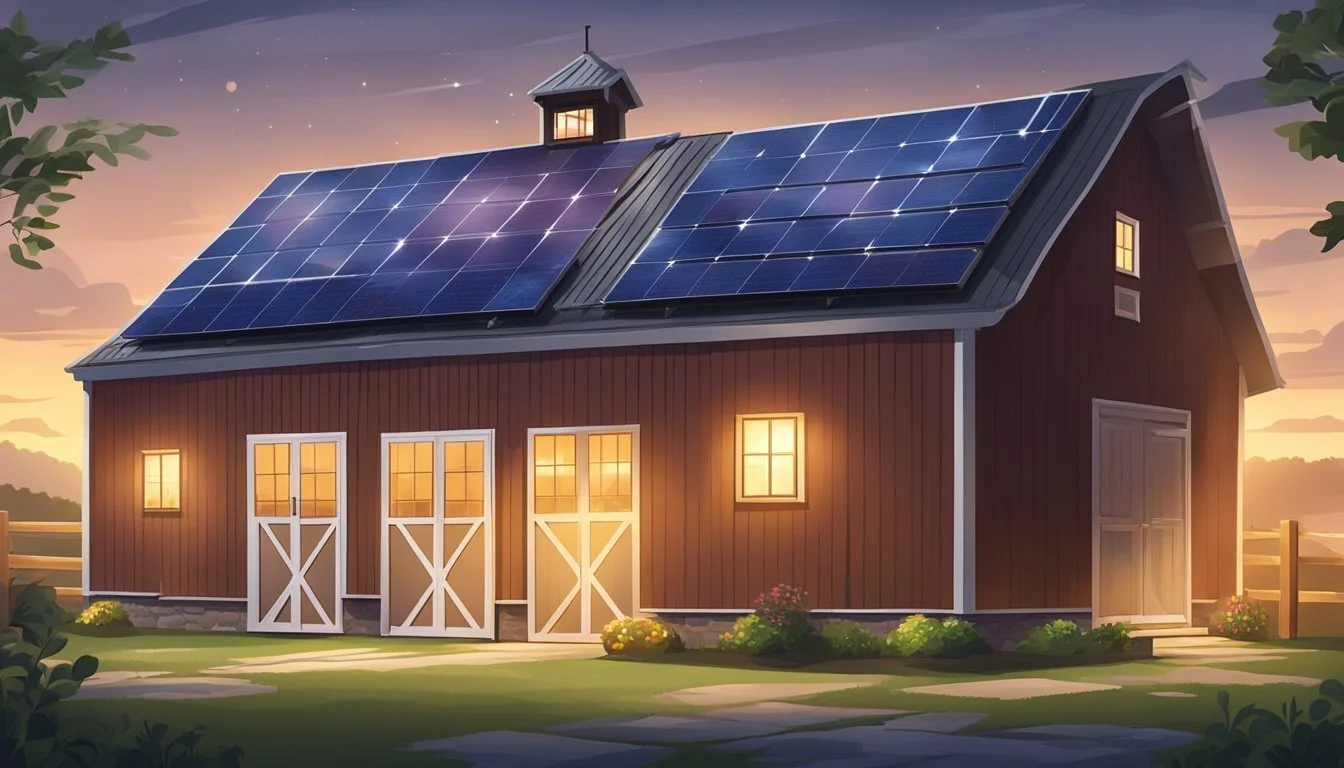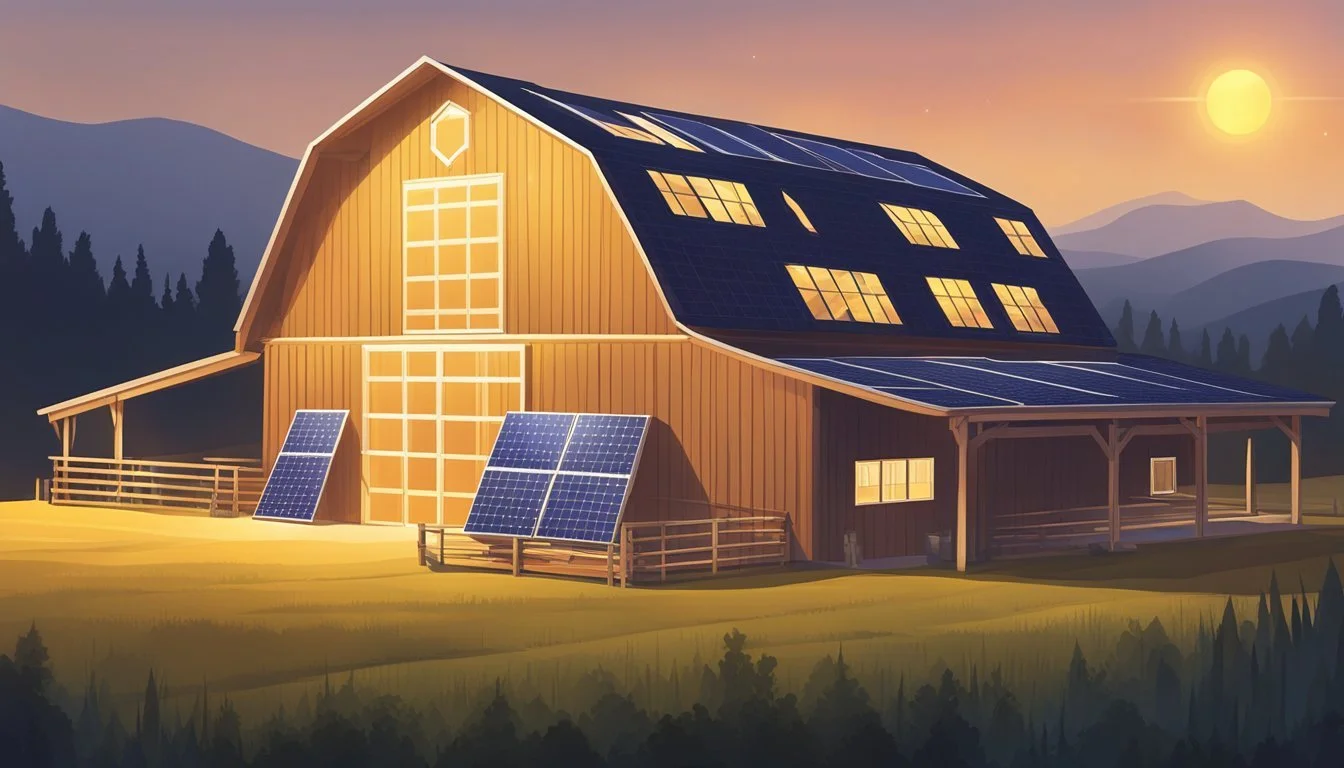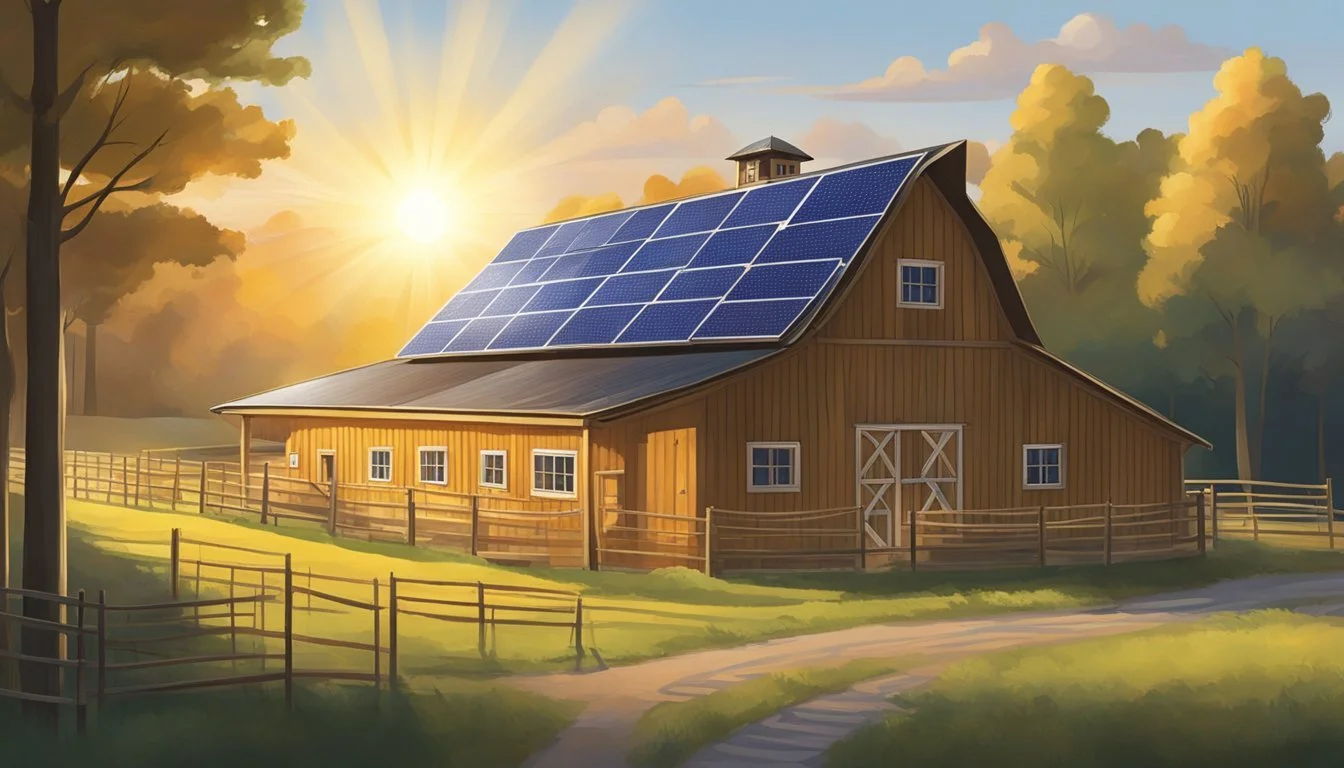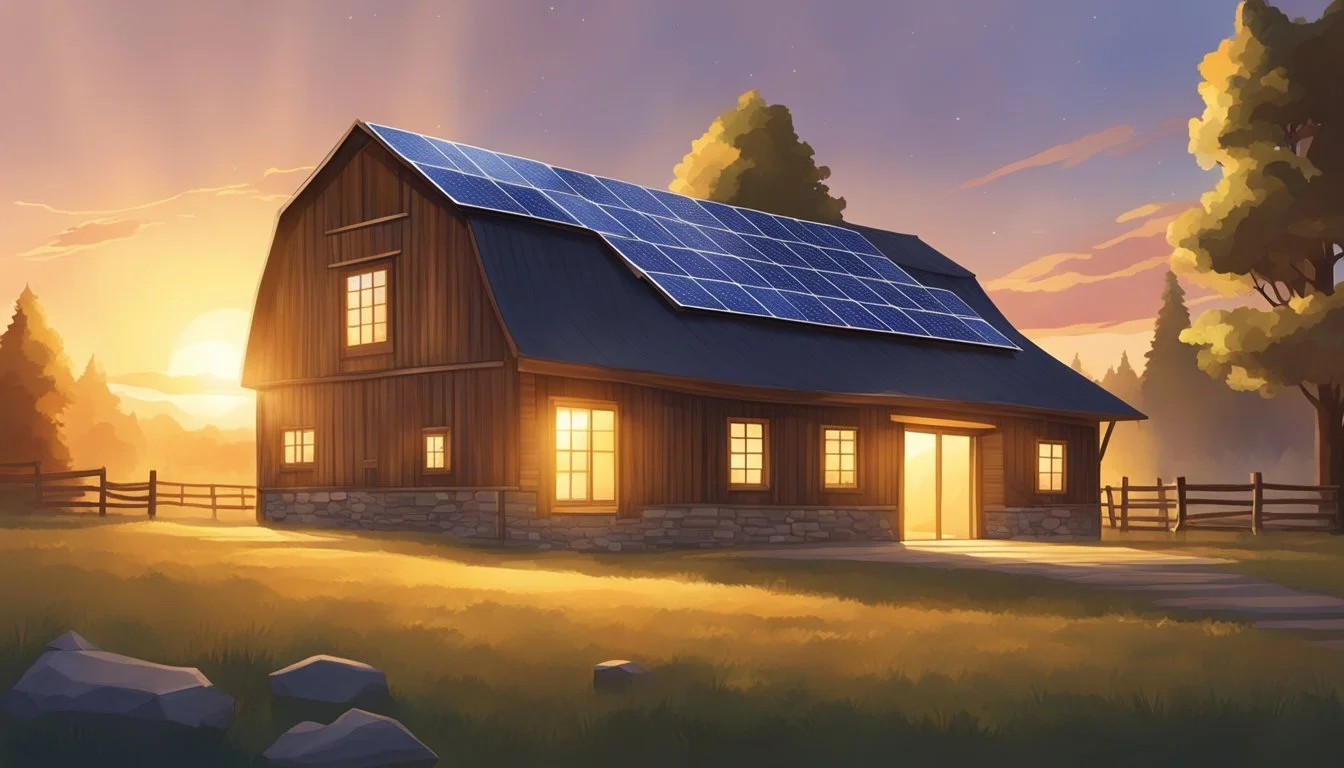Energy-Efficient Lighting Solutions
Integrating Solar Technology in Barns and Outbuildings
In the realm of agriculture and rural living, where outbuildings like barns are common, energy-efficient lighting solutions are gaining prominence. The adoption of solar power for illuminating these structures speaks to a broader commitment to sustainable practices. Solar barn lights, in particular, provide an economical and eco-friendly option that allows owners to reduce their carbon footprint while ensuring that their barns and outbuildings are well-lit. These lighting systems are typically easy to install and require minimal maintenance, embodying the essence of energy efficiency and sustainability.
The advantages of using solar energy for lighting are multifaceted. In remote locations where grid electricity can be unreliable or expensive to install, solar lighting stands out as a viable alternative. With sufficient sunlight, solar panels charge batteries during the day, which then power LED lights after dusk, creating a reliable cycle of natural energy use. This approach not only lowers energy costs but also provides a level of independence from the conventional power grid.
Furthermore, innovations in solar lighting technology have enhanced the functionality and performance of these systems. Modern solar barn lights come equipped with features such as motion sensors and multiple lighting modes to cater to various needs, from illuminating walkways for safety to providing bright light for working conditions. With their waterproof designs and breadth of coverage, these lighting solutions offer both resilience and versatility for the demanding conditions of rural and agricultural environments.
Understanding Solar Power
Solar power is a clean, renewable energy source that provides an efficient way to illuminate barns and outbuildings. By converting sunlight directly into electricity, solar technology minimizes energy consumption while supporting sustainable practices.
The Photovoltaic Effect
The photovoltaic effect is the process by which solar cells transform sunlight into electrical energy. When sunlight hits a solar cell made of semi-conductive materials such as silicon, it energizes electrons, creating an electric current. This phenomenon is the foundational principle behind solar panel operation and is critical to harnessing solar energy for practical use.
Solar Panels and Energy Capture
Solar panels consist of many interconnected solar cells designed to capture solar energy. These panels are typically installed on rooftops or other places with optimal sun exposure. The efficiency of these panels is determined by the quality of their materials and their installation angles, with modern advancements continually improving their ability to capture and convert sunlight.
Batteries and Energy Storage
Once captured, the electricity generated by solar panels can be stored in batteries for later use. Batteries in solar lighting systems often use nickel-metal hydride (NiMH) technology, known for its favorable energy density and fewer memory effects compared to older battery types. This stored energy can then be used to power lighting in barns and outbuildings, ensuring a continuous and reliable source of illumination.
Essential Components of Solar Lighting Systems
Solar lighting systems for barns and outbuildings utilize several key components to provide reliable, energy-efficient illumination. These systems harness solar power during the day, which is then used to light these spaces after sunset.
Photovoltaic Cells
Photovoltaic (PV) cells are the principal element in a solar lighting system, responsible for capturing sunlight and converting it into electrical energy. These cells are typically made from silicon alloys and are configured into panels. Their efficiency in conversion plays a critical role in the overall energy yield of the system.
MPPT Controllers
Maximum Power Point Tracking (MPPT) controllers optimize the extraction of power from the photovoltaic cells. They continuously adjust the electrical operating point of the modules or array to ensure that the solar panels harvest the maximum power irrespective of temperature or the amount of sunlight.
LED Lights and Brightness Levels
At the heart of the illumination provided by solar lighting systems are LED lights, renowned for their high energy efficiency and long lifespan. The brightness levels of these lights can be easily adjusted to meet the specific requirements of a barn or outbuilding, ensuring that just the right amount of light is provided without waste.
Battery Life and Efficiency
The electricity generated by PV cells is stored in batteries for use when the sun is not shining. The battery life and efficiency are crucial for the uninterrupted operation of the solar lighting system. Modern systems often use lithium batteries that offer a combination of high energy density and a longer lifespan compared to traditional lead-acid batteries.
Design and Installation of Solar Lighting
When tailoring solar lighting for barns and outbuildings, key considerations include selecting the appropriate size and style for efficiency, ensuring the chosen materials are ideal for installation, and guaranteeing robust weatherproofing for long-term durability.
Determining the Right Size and Style
Choosing the right size for a solar lighting system is critical. One should calculate the area to be illuminated and match the lumen output of the fixtures accordingly. For barns and outbuildings, style also factors in operational needs – such as stationary or motion-sensor lights – to provide appropriate functionality.
Installation and Material Considerations
Easy installation is a highlight of solar lighting. Many systems are standalone with built-in photovoltaic panels and do not require complex wiring, making them suitable for DIY projects. The materials used for fixtures and mounts should have high resilience to physical stress, ensuring a long service life. Stainless steel or powder-coated aluminum offer durability without compromising on weight.
Installation Materials
Fixtures: Stainless steel, Powder-coated aluminum
Mounts: Galvanized steel, Weather-resistant composites
Weatherproofing and Durability
Solar lighting intended for outdoor use should be thoroughly weatherproof. Components need to withstand diverse climates – from heavy rain to excessive sunlight. When selecting solar lights, look for IP-rated fixtures denoting weather resistance, and opt for systems with durable batteries designed for outdoor temperature fluctuations.
Durability Checklist
IP rating: Minimum of IP65 for dust and water jet resistance
Temperature range: Suitable for the local climate extremes
Solar Lighting for Barns and Outbuildings
In rural and remote areas, harnessing solar power for barns and outbuildings is a practical solution to enhance visibility and promote efficiency. This form of outdoor lighting leverages renewable energy to benefit sustainable agriculture and streamline operations.
Choosing Lights for Barns and Stalls
For barns and stalls, selecting the right lighting is crucial for both functionality and energy efficiency. Solar-powered barn lights come in various designs, with popular options including gooseneck barn lights which combine aesthetics with functionality, providing directional lighting that is both attractive and practical. Key factors to consider when choosing lights include:
Lumen Output: Look for fixtures with sufficient lumen output, typically around 1000 lumens, to ensure adequate illumination.
Durability: Lights should be built to withstand the environmental conditions of a barn setting.
Outbuilding Lighting Solutions
Lighting outbuildings with solar power involves understanding the specific power and lighting needs of each space. Solar kits are often a favored choice as they are scalable and easy to install. Essential components typically include:
High-Efficiency Solar Panels: Look for poly-crystalline panels or comparable alternatives for optimal energy conversion.
Battery Backup: Systems with a 2-day battery backup ensure continued operation during overcast conditions.
Benefits of Solar-Powered Barn Lights
Solar-powered lights for barns and other outbuildings provide several benefits:
Cost-Effectiveness: Once installed, these lighting systems require little maintenance, reducing long-term costs.
Environmental Impact: Solar lights provide a clean energy source, aligning with the principles of sustainable agriculture.
Utilizing solar lighting solutions for barns and outbuildings not only improves the utility and safety of these structures but also contributes to a farm's overall commitment to sustainability.
Performance in Various Conditions
Solar-powered lighting solutions for barns and outbuildings must maintain performance across a spectrum of environmental conditions. Understanding how these systems perform on cloudy days and with varying brightness levels informs their efficiency and flexibility.
Efficiency During Cloudy Days
Solar power systems are less effective during cloudy days as the solar irradiance is significantly reduced. However, modern photovoltaic (PV) cells can still harness energy, albeit at lower levels. Monocrystalline panels are particularly adept at maintaining functionality under overcast conditions due to their high-quality silicon, converting more diffused sunlight into usable energy.
Typical efficiencies:
Clear days: Up to 20% efficiency
Cloudy days: Approximately 10-25% decreased performance
Adapting to Changes in Brightness Levels
Solar power systems exhibit remarkable flexibility in response to changing brightness levels. Advanced Maximum Power Point Tracking (MPPT) technology continuously adjusts electrical configurations to maximize power extraction from the PV modules. This adaptation sustains efficient energy capture across the variances in daylight exposure.
Automatic adjustments include:
Voltage regulation
Current optimization
By implementing technologies capable of maintaining energy harvesting under fluctuating light conditions, barns and outbuildings can enjoy a consistent and reliable power supply.
Advantages of Energy-Efficient Lighting
The shift towards energy-efficient lighting, particularly solar-powered systems for barns and outbuildings, offers a multitude of benefits spanning from reduced environmental impact to significant cost savings and a push towards sustainability.
Environmental Benefits
Energy-efficient lighting systems significantly reduce carbon emissions, directly contributing to a decrease in the overall carbon footprint of a property. The adoption of technologies like LEDs, which use less power and have a longer lifespan, result in fewer resources being consumed over time.
Reduced electricity demand from lighting helps mitigate the impact on natural resources.
Utilization of solar power, an eco-friendly and renewable energy solution, curtails dependency on fossil fuels.
Financial Benefits and Cost Savings
Investing in energy-efficient lighting is cost-effective. Over time, users notice substantial cost savings due to the lower energy consumption of LED and CFL lighting options compared to traditional systems.
75-watt Incandescent
Approximate Energy Usage: 75 watts
Energy-Efficient Equivalent: 1,100 lumen LED
Approximate Savings: Up to 88%
60-watt Incandescent
Approximate Energy Usage: 60 watts
Energy-Efficient Equivalent: 800 lumen LED
Approximate Savings: Up to 85%
Cost savings are further amplified by the durability of energy-efficient bulbs, leading to less frequent replacements.
Barns and outbuildings with solar panels can experience near-zero costs for lighting during daylight hours.
Sustainability and Energy Independence
The integration of energy-efficient lighting into barns and outbuildings promotes sustainability and sustainable practices. It enables a move towards energy independence by leveraging on-site solar generation.
Energy-efficient lighting, particularly when paired with solar power systems, contributes to a sustainable cycle of energy usage, reducing reliance on grid power.
Buildings equipped with solar panels and energy-efficient lighting become less impacted by external energy price fluctuations, favoring long-term energy independence.
Innovations and Future Trends
The agricultural sector is poised to benefit greatly from innovations in solar technology and smart farming. These advancements promise enhanced resource efficiency and adherence to sustainable practices.
Solar Technology Advancements
Recent advancements in solar technology are making significant strides towards more efficient energy solutions for barns and outbuildings. Photovoltaic (PV) cells, already a cornerstone of modern solar systems, have seen improvements in their conversion efficiencies, allowing them to generate more power from the same amount of sunlight. Innovations such as bifacial solar panels, which capture sunlight from both sides, and the integration of AI-driven technologies for system management, are driving these improvements forward.
Increased Conversion Efficiency: New materials and designs in PV cells are driving up efficiency ratings, ensuring more electricity is generated per panel.
Bifacial Panels: This technology harnesses sunlight from both the front and the back of the panel, leading to increased energy generation without requiring additional space.
AI Optimization: Artificial intelligence is being employed to optimize energy yield and maintenance schedules, resulting in longer lasting and more reliable solar systems.
Sustainable and Smart Farming Applications
The application of solar power in sustainable agriculture is not limited to just energy generation. Solar energy systems can power a range of smart farming applications that promote sustainable practices. These systems provide the necessary energy to run sensors and automation equipment that can monitor and adjust environmental conditions, leading to more efficient use of resources.
Automated Irrigation Systems: Powered by solar panels, these systems can conserve water by providing the right amount of moisture based on weather and soil data.
Energy-Efficient LED Lighting: For barns and outbuildings that require lighting, the use of LEDs offers a low-power, high-output solution that pairs perfectly with solar-generated electricity.
Climate Control: Solar energy can power ventilation systems that maintain optimal conditions for livestock or crop storage without the heavy reliance on the grid.
These advancements demonstrate a commitment to improving energy efficiency and sustainability in agricultural operations, showcasing a future where farms are powered by clean, renewable energy sources.
Maintaining and Maximizing System Performance
In order to ensure the longevity and effectiveness of solar-powered lighting systems for barns and outbuildings, regular maintenance and the integration of smart controls are essential. Proper battery care can extend service life, while system monitoring allows for efficient operation adjustments.
Battery Maintenance and Replacement
Battery maintenance is crucial for the continued function of solar lighting systems. Users should routinely check for corrosion and ensure that connections are clean and secure. It's important to:
Inspect batteries for physical damage or swelling.
Test the charge regularly to prevent over-discharge.
Maintain proper electrolyte levels in lead-acid batteries, if applicable.
Battery life can be significantly impacted by temperature and the number of charge cycles. When batteries cannot hold a sufficient charge, they should be replaced to maintain system performance.
System Monitoring and Remote Control
System monitoring provides real-time data on energy consumption and photovoltaic performance. Using remote control technology, users can:
Adjust lighting schedules based on usage patterns.
Monitor energy output and battery health remotely.
Detect and troubleshoot issues proactively, thereby preventing unnecessary downtime.
Leveraging a remote control suite can reduce the need for physical inspections, saving time and resources while ensuring that the lighting system functions optimally.
Additional Features and Considerations
When implementing solar-powered lighting in barns and outbuildings, one must consider additional features that enhance functionality and sustainability. These can range from integrating smart lighting systems for security to selecting designs that complement outdoor aesthetics, all while managing resources effectively and mitigating safety hazards.
Motion Sensors and Security
Solar-powered lighting systems often incorporate motion sensors to improve security in outbuildings. The addition of sensors ensures that lights activate only when needed, reducing energy waste and extending the lifespan of lighting components. This functionality also deters trespassers and enhances the safety of livestock and equipment stored within the structures.
Aesthetic Appeal and Outdoor Spaces
Outdoor spaces benefit significantly from lighting that marries aesthetic appeal with functionality. Solar lighting fixtures come in various designs, from rustic to modern, to suit the architectural style of the barn and surrounding landscape. Soft lighting can be used to highlight pathways and garden features, creating an inviting ambiance without compromising energy efficiency.
Water Conservation and Resource Management
Efficient lighting goes hand in hand with overall water conservation and resource management strategies. Solar lights with LED bulbs consume less power and have no requirements for underground electrical wiring, which can be detrimental to water management systems. By choosing solar-powered options, farms can effectively manage resources and reduce the environmental footprint of their operations.
Safety and Light Pollution
Safety is a paramount concern; therefore, solar light fixtures should provide adequate illumination to ensure visibility and prevent accidents. Equally important is addressing light pollution, which can disrupt local wildlife and the environment. Strategically placed and properly shielded lights minimize skyglow and glare while maintaining the safety and security of the area.

